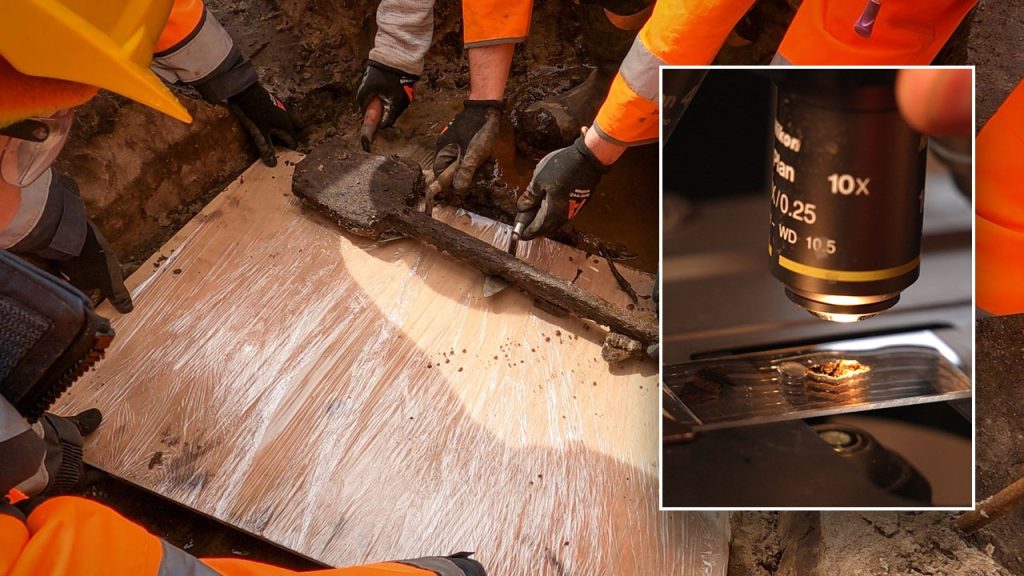Archaeologists from Wessex Archaeology made an incredible discovery during an excavation ahead of a habitat project near Poole Harbour in Britain – an ancient wooden tool that is one of the oldest and most complete ever found in the country. The initial stages of the excavation did not yield much besides pottery shards and flint until the wooden tool was uncovered. Scientific dating of the tool placed it in the Bronze Age, dating back to between 1500 and 1400 B.C. Radiocarbon dating further confirmed the tool’s age to be between 3,400 and 3,500 years old. The tool, crafted from a single piece of wood, was likely a valuable and time-consuming creation over 3,000 years ago.
The landscape where the tool was found was dominated by nature, with little evidence of human activity visible to the naked eye. However, beneath the surface, evidence was discovered of how humans had adapted to the environment over thousands of years. The discovery of the wooden tool sheds light on the ways ancient people encountered the challenges posed by the wetlands habitat. The spade was found in close proximity to a ditch, which indicates a clever relationship between the tool and the environment. Further research is planned to explore what the spade and ditch can reveal about life at Arne Moors 3,000 years ago.
Wooden tools from the Bronze Age are rare finds, with the last discovery of a similar tool in Britain being the Brynlow shovel in 1875. The exceptional preservation of the recent discovery can be attributed to its waterlogged environment, which allowed it to survive underground for over 3,000 years. The unique qualities of the find make it a valuable piece of archaeological evidence, offering insights into ancient craftsmanship and adaptations to the environment. The wooden tool is currently undergoing conservation and further studies to unlock more information about its significance.
The discovery of the ancient wooden tool provides a glimpse into the technological advancements and daily life of people living in Britain during the Bronze Age. The tool’s well-preserved condition and rarity make it a significant find for archaeologists studying the region’s past. Archaeologists are eager to learn more about the relationship between the tool and the surrounding environment, as well as the implications of its discovery on our understanding of ancient civilizations. Continued research and analysis of the wooden tool will likely reveal more insights into the practices and skills of Bronze Age inhabitants in the area.
The significance of the wooden tool lies not only in its age but also in its rarity and remarkable preservation. Organic materials like wood typically do not withstand the test of time in archaeological sites, making the find even more exceptional. The discovery highlights the importance of careful excavation and preservation techniques in unearthing valuable artifacts that can shed light on ancient societies and their interactions with the environment. By studying and conserving the wooden tool, researchers will be able to piece together more of the puzzle of human history in the region and gain a greater understanding of past civilizations.
The find represents a remarkable moment in archaeological exploration, offering a glimpse into a distant past and the ingenuity of ancient peoples. The unexpected discovery of the wooden tool amidst a seemingly uninhabited landscape underscores the need for thorough investigation and diligent excavation practices in uncovering hidden treasures from history. As researchers continue to investigate the tool and its surrounding context, more details are likely to emerge, enriching our knowledge of the Bronze Age and the ways in which early societies thrived in challenging environments. The ancient tool serves as a tangible link to a bygone era, inviting further exploration and study to unlock the secrets of our shared heritage.


